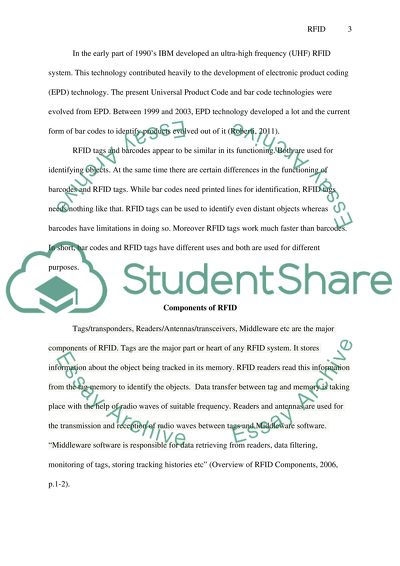Radio-Frequency Identification Essay Example | Topics and Well Written Essays - 750 words. Retrieved from https://studentshare.org/information-technology/1434924-rfid
Radio-Frequency Identification Essay Example | Topics and Well Written Essays - 750 Words. https://studentshare.org/information-technology/1434924-rfid.


